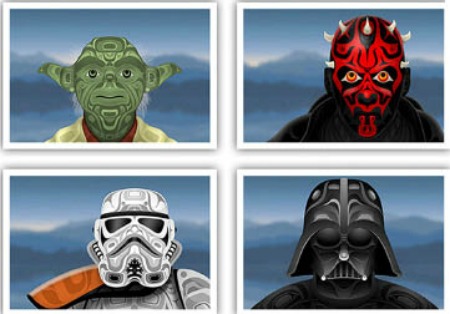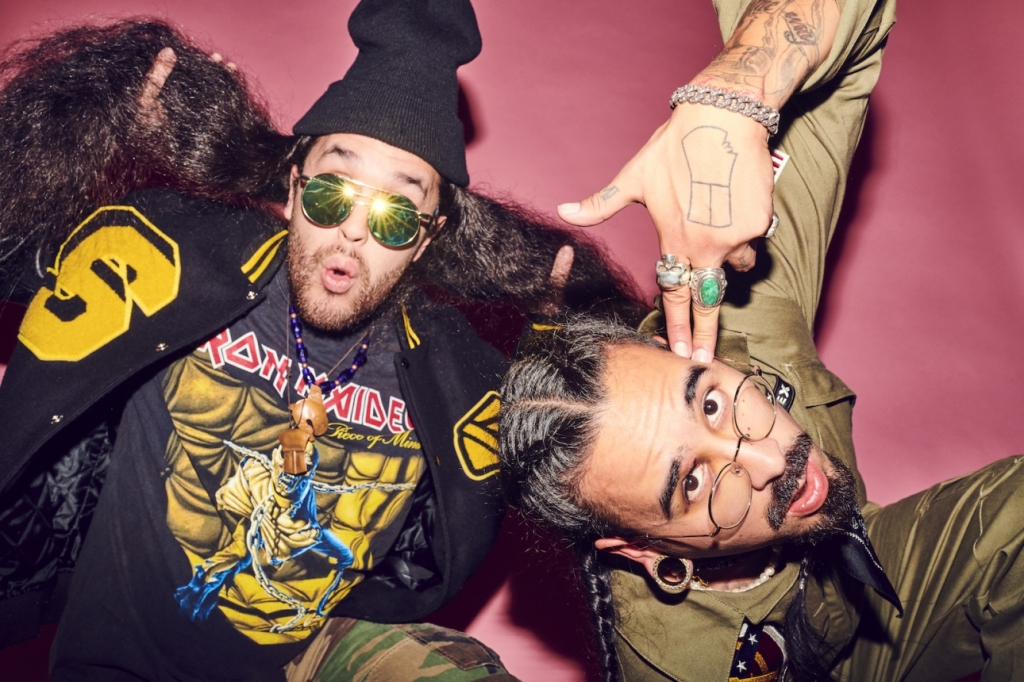
nalaatsi_BG
Unit 5 looks at contemporary Indigenous art in BC, Canada & beyond. It also examines representations of Indigenous peoples in pop culture, issues concerning cultural appropriation, moving beyond stereotypes, and some awesome examples of how Indigenous peoples are using pop culture to expose and dismantle stereotypes and systems of oppression.

ACTIVITY 1: Cultural Appropriation
What is cultural appropriation? Is it simply one group taking something from another group’s culture? Or is it more complicated? The short answer answer: yes, it’s more complicated. In order to understand cultural appropriation we have to look at power dynamics. Cultural appropriation isn’t simply cultural exchange – one cultural group borrowing or taking from another cultural group – it’s a dominant cultural group borrowing or taking from another cultural group, especially if that group has been marginalized or has experienced oppression historically. So if Indigenous artist Andy Everson uses Star Wars imagery in his paintings, is that cultural appropriation?
In short, no. Star Wars is very much part of the dominant culture. This makes it ‘up for grabs’ in a sense (legal issues notwithstanding 🙂 where artists are free to use it in their work. To take a counter example, if a white artist borrows heavily from traditional Indigenous imagery, designs, or forms – this is an example of cultural appropriation. Check out this well-written piece by Andray Domise. How Some People Are Missing the Point on Cultural Appropriation
Drew Hayden Taylor’s documentary ‘Searching for Winnetou’ explores the issue of cultural appropriation. You may not agree with the conclusion he reaches at the very end. In two paragraphs tell me: 1) what were 3 things that stood out to you in the documentary? 2)Did you agree with Drew’s opinion (Germans appropriating Indigenous culture is more or less the same as non-Germans celebrating Oktoberfest) and tell me why or why not. *** Spoiler alert: most students do not agree with Drew’s conclusions 🙂
ACTIVITY 2: Reel Injun is a 2009 Canadian documentary film directed by Cree filmmaker Neil Diamond that explores the portrayal of Native Americans in film and popular culture. The film explores the various stereotypes about Natives in film, from the ‘noble savage’ to the ‘drunken Indian.’ (Ask Rory for the film, we have the DVD at school).“This documentary illustrates the depiction of North America’s First Peoples since the beginning of the history of Hollywood, and shows how these portrayals have entrenched the pop-culture images of the “Injun” as opposed to the lived experience and reality of First Peoples. The film shows how the film industry is changing and how First Peoples are confronting the images and values co-opted by the North
American media.”
After watching Reel Injun, in a 1 paragraph response, provide a critical reaction to the film. Some things to consider: do you agree that the portrayal of Indigenous people in film and/or pop culture is improving? What examples can you give in support of your answer?
ACTIVITY 3: “I’m Not The Indian You Had In Mind”
Have you ever noticed how Indigenous peoples are often talked about in the past tense? If you’ve ever gone to a museum exhibit or read through a social studies textbook you may have noticed this. Often the view that mainstream society presents is that Indigenous peoples are an extinct people: relics from a bygone era, an historical people. All the common stereotypes come out, and Indigenous peoples are discussed as though they don’t exist in the modern world. This classic short film discusses this tendency for mainstream society to present Indigenous peoples in this way, and emphasizes the complexity and diversity of Indigenous peoples as they exist in the modern world.
In one paragraph, I’d like you to tell me whether you think this problem still exists – mainstream culture seeing Indigenous peoples as historical stereotypes instead of complex people in the modern world – and whether this problem is getting better or worse, in your opinion.
ACTIVITY 4: Contemporary Artist Research Project. Now it’s time for you to explore an area of contemporary Indigenous art that appeals to you. Below is a list of contemporary Indigenous artists, including musicians, artists, authors, and so forth. You can also choose someone who isn’t on this list, just make sure to run it by me.
Assignment: either create a 10 slide PowerPoint about the artist, or write a 2 paragraph piece about the artist.
